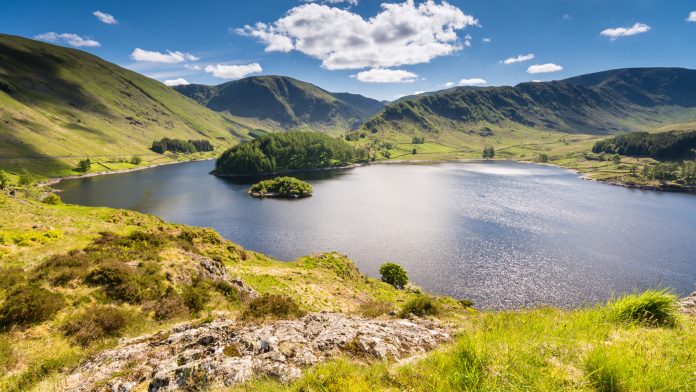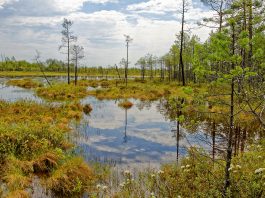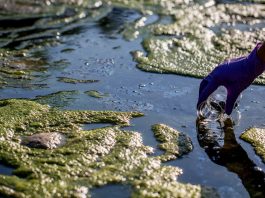Professor Maciej Zalewski, Director of the European Regional Centre for Ecohydrology of the Polish Academy of Sciences, spoke to Innovation News Network about how the ecohydrological approach is used to mitigate the impacts of climate change.
Ecohydrology examines the interrelations between hydrology and ecological systems. It uses the relationship between hydrological and biological processes at different scales to improve biodiversity, lessen ecological threats, improve water security, and increase harmony in the catchment area.
The concept of transdisciplinary ecohydrology was founded by Professor Maciej Zalewski, under the framework of the UNESCO programme Man and the Biosphere (MAB) and UNESCO Intergovernmental Hydrological Programme (IHP). Alongside his role as Chairman of the Department of Applied Ecology at the University of Lodz, Professor Zalewski is Director of the UNESCO European Regional Centre for Ecohydrology of the Polish Academy of Sciences (ERCE-PAS). As a scientific institute, ERCE-PAS develops and implements ecohydrological solutions for the enhancement of good ecological status of inland waters and to mitigate the impacts of climate change (Water Framework Directive).
Innovation News Network spoke to Professor Maciej Zalewski to learn more about the concept of ecohydrology, its evolution, and the work of the ERCE-PAS.
Can you tell me about the background of the European Regional Centre for Ecohydrology of the Polish Academy of Sciences? What are the organisation’s objectives and missions?
In 1989, I was involved with UNESCO MAB and IHP programmes, as scientific co-ordinator of one of the sub-programmes, the first programme concerning land/water ecotone buffer zones. Polish ecology research was, at that time, carried out by the International Centre of Ecology; however, my transdisciplinary work in the UNESCO programmes piqued the interest of the President of the Polish Academy of Science. In 2000, he invited me to restructure the International Centre for Ecology towards Ecohydrology.
The field of ongoing limnological research was relatively narrow, and I knew that we could not continue using such an approach – focusing attempts to solve very complex river-system problems in the catchment perspective, by narrow specialists, does not work. Prior to this, I considered the necessary integration of science because water is a key driver in the biosphere. To better understand hydrological processes, ecological processes should also be considered. Therefore, a top-down algorithm was needed to help people understand the complexity of the process.
We are now faced with a socio-centric mechanistic paradigm, however, to survive on Earth, we have to adapt to an evolutionary ecosystemic paradigm. As individuals, we each must understand that we are shaping the future. Half of the responsibility lies with us, and the other half lies with the decision-makers. That is why we must develop understanding and a participatory way of thinking about the global society, to produce innovative technology.
We now have fantastic tools to assist in understanding ecological processes – especially water-biota interplay, which can be translated into what is now called nature-based solutions or ecological engineering. Ecohydrology uses ecosystem properties as management, and this is the background of ERCE’s mission and the development of this type of approach.
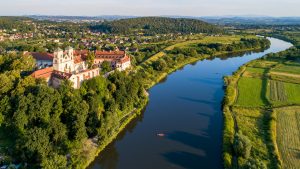
Better integration of understanding of hydrological and ecological processes should be translated into new Nature-Based Solutions and systemic solutions for Integrated Water Resources Management (IWRM)
A keyword within ecohydrology is the acronym WBSR. ‘W’ stands for water, as every investment in improving the environment has to enhance the quality and quantity of water. ‘B’ stands for bio-productivity and biodiversity. Enhanced bio-productivity in water means the ecosystem can accumulate more carbon, and better support biodiversity. Thirdly, if we have water, bio-productivity and biodiversity, we have to enhance these elements to provide services for society, which is the ‘S’. We also have to optimise these three elements to increase climate change resilience, which is ‘R’. However, after working with our peers, we added the aspect of Culture and Education (+CE), indicating the need to create a sustainable culture in society so that each of us is responsibly shaping the future. This is the mission and direction of activity at ERCE.
Can you explain more about the concept of ecohydrology and how it was developed?
There were two critical turning points in my career. The first was in 1979 when some of my British colleagues discovered my papers on the Vistula River and invited me to their Liverpool symposium. Here, I met brilliant scientists, and this was highly inspiring. The following year, I received a fellowship from the Canadian Government. I was given access to a great library at the University of Guelph, and, most importantly, this enabled me to have contact with great scientists again.
To improve predictive potential, we need a common denominator to understand the processes in the biosphere – the relation between water and the ecosystem. During my stay in Canada, I proposed with my colleague Professor Robert Naiman, a three-dimensional model of the abiotic-biotic regulatory concept, where the first dimension is the hydrological process line. However, its second dimension is temperature, which is expressed in thermodynamics. This was the first model where ecology and hydrology were combined, and this was a deductive model based on the understanding of the physics and chemical processes in the environment.
Many different activities built the predictive potential; however, the most critical were empirical findings. After returning from Canada, I was interested in energy flow in the reservoir ecosystem and understanding of hydrological regulation feedbacks. I discovered that water levels in the spring could be a fantastic factor for shaping all biological structures of the ecosystem. In spring, when the water level in the reservoir was low, the reproductive success of fish was also low. This resulted in very high densities of zooplankton and a high rate of biofiltration, which meant the symptoms of eutrophication and toxic algal blooms were significantly reduced.
Ecohydrology integrates ecology and hydrology but has to create innovative solutions. During toxic algal blooms, instances were reported of children vomiting after they had been swimming in the reservoir. I, therefore, needed to translate the understanding of ecohydrology processes to discover a solution to this problem. I determined that ecology was not enough, and I connected with different specialists: hydrologists, hydrochemists, and remote sensing specialists, for example, to learn of their perspectives. This was the basis for the development of ecohydrology.
Can you tell me about the current projects that the ERCE-PAS is working on?
One of the things we are working on is the improvement of biotechnology for the purification of stored water. For example, nitrogen and phosphorus are two significant pollutants, and they are essential stimulators of fertilisation in the aquatic system. Toxic algal blooms are also present in reservoirs, lakes, and coastal zones. For reduction of nitrogen load from the agricultural landscape, we are working on the enhancement of denitrification barriers by different bacteria. We have published several papers, and are making considerable progress in increasing process efficiency. Nitrogen generated by industrial agriculture significantly increases over-fertilisation of the biosphere.
We also used different calcium rocks as absorbing substrate to reduce the phosphorus load in urban stormwater. We then took a further step, developing BioKer, a highly efficient absorbing material, which was awarded a gold medal at the 2018 International Lépine Competition in Paris in the category Innovation and Environment. Additionally, we developed a new version where you can absorb pesticides in agricultural landscapes, and we see large concentrations of pesticides in sub-streams.
Pesticides are so dangerous to agricultural biocenosis because, for example, biofiltrating Daphnia in a reservoir within an agricultural catchment is a lot more vulnerable to pesticides than insects. Small concentrations of pesticides eliminate the Daphnia biofiltrators, increasing the reservoir’s vulnerability to toxic algal blooms. This explains the situation where concentration of phosphorus, a major factor stimulating algal blooms, was not very high, but the algal bloom was extensive.
We are currently also studying societal priorities because we wish for a greater understanding of citizen’s priorities, as a synonym of ecohydrology is ‘engineering harmony’. We have to adapt our solutions, identify the knowledge gaps, and focus on society to harmonise education and responsibility. This is a new aspect of our work, and we are testing our solutions through co-operations with cities and a City of Lodz architect.
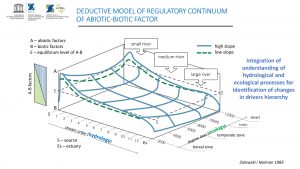
This Abiotic-Biotic Deductive model was the first model where ecology and hydrology were integrated
Can you provide some insight into what will be discussed at the Second International Conference of Water, Megacities and Global Climate Change, coming up in January 2022?
The ‘megacity’ – a large city – should become an essential solution for reducing the increasing impact on the biosphere. If a city is created as an intelligent city and a blue-green city, we can significantly reduce the energy use. Solar panels can be placed on buildings to save energy, for instance.
The city is a place where the intellectual potential of people creates high critical mass. However, the dispersion of people from the city, due to bad air quality, into surrounding suburban areas, is degrading the biosphere. Urban Sprawl increases the use of energy through commuting and, therefore, raises pollution levels. That is why we should create a city as a blue-green network, meaning that every person has easy access to green areas. Green areas, however, cannot function properly without water. That is why the mechanistic approach in increasing the transfer of dirty water out of the city is nonsense. It is necessary to develop purification biotechnologies based on the understanding of the self-purification of the river to purify still water and retain it in the city landscape.
Retention of water in a green area of the city is not only improving the microclimate and air quality, but also recharges ground water and reduces the peaks to the treatment plant, which often avoids extra loads of dirty water by transferring it by a bypass to the river directly. Retention in the city will allow water to be supplied to the root system. A large tree, for example, can transpire half a tonne of water for several hours, and this increases moisture, reduces dust in the air, and reduces temperature by a few degrees in the open space.
My colleague, a professor in pulmonology measured to what extent hot concrete-covered areas within cities affects asthma and allergies among children, compared to areas with a minimum of 30% of a green-blue landscape. In the city centre, where concrete-covered areas are extensive, 15-18% of children under the age of five suffer from asthma or allergies, which affects the quality of their lives. The blue-green network is necessary to reduce the ecological footprint and encourage people to stay in the city. It is also about having an opportunity to have an active life.
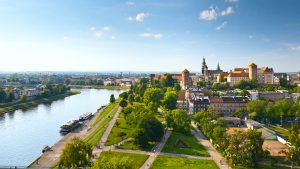
Recently, we have also been investigating urban sprawl. When people move from cities to the suburbs, they create many small housings that degrade the potential for recreation areas and increase pollution. People that have moved out of the centre do not pay city taxes meaning that the city is also losing money from the urban sprawl. There is no positive economic feedback being created by this, which will not help the development of the city infrastructure.
How can the application of the ecohydrological approach mitigate the impacts of climate change and improve ecosystem services?
One aspect is how COP26 interacts with ecohydrological solutions. If a purely ecological approach is used to mitigate current extreme climate change impacts, it will not work effectively, as the biological structures are already degraded. We are arriving at an optimal point for using ecohydrological nature-based solutions. One of the ecohydrological solutions are hybrid systems, which use hydroengineering solutions, combined and enhanced with nature-based solutions. In general, a solution is the elimination or reduction of threats and the amplification of opportunities. The discussions at COP26 suggest that we must reduce the emission threats and provide the opportunity to move from extreme impacts to a more moderated stage, in which case the performance of ecohydrological nature-based solutions can do an excellent job.
In the document which published the UNESCO World Water Assessment Programme in 2018, there is a picture showing the biosphere map and the role of the terrestrial ecosystem in establishing the water cycle. There are some areas like parts of China and Siberia, where 80% of the water cycle is dependent on the terrestrial ecosystem. In countries on coasts or islands, the ocean plays a significant role in the ecosystem, and the green ecosystem can only have a role in filtration to improve water quality. 65% of continents understand the general function of stabilisation, filtration, and purification, but if you want to achieve sustainability, you need to understand this process from molecular to catchment/biocenosis level.
For example, in Indonesia, I have seen how narrow specialisation does not work as a solution, due to its inefficiency. I saw their reservoir, and it was potentially crucial for supplying water for Jakarta because Jakarta is affected by a saltwater intrusion process, meaning the saltwater is entering groundwaters under the city. They even constructed a sewage treatment plant above the reservoir but water quality was not improving because the effects of sewage treatments were diminished by fish cages that were put in the reservoir. Fish assimilate 10% of their food and 90% of it is excreted in faeces resulting in over-fertilisation of the reservoir. Thus, the phosphorus and nitrogen reduced in the treatment plant were added by the aquaculture.
Fortunately, they used small cages, so to solve the problem I proposed they collected the faeces in a trapping umbrella-like system, with tubes under the cages. The fish waste could then be used via these tubes to fertilise the local fields. In this instance, it changed the phosphorus and nitrogen cycling, as instead of fertilising the reservoir, the fertiliser was used following the idea of the circular economy. This case showed that understanding of ecohydrological processes supports the circular economy, which is essential for our future.
Professor Maciej Zalewski
Director
The European Regional Centre for Ecohydrology
of the Polish Academy of Sciences
www.erce.unesco.lodz.pl
Please note, this article will also appear in the eighth edition of our quarterly publication.

